Eyewitness
ANCIENT
GREECE
Eyewitness titles:
Also available in this series:
Ancient Egypt Ancient Greece Ancient Iraq Ancient Rome Arms & Armour Astronomy Aztec Bird Castle Cat China Christianity Crystal & Gem Dance Dinosaur Dog Early People Explorer Flying Machine Food Football Fossil Great Scientists Horse Human Body Hurricane Insect Invention Jungle Knight Leonardo da Vinci Mammal Medieval Life Modern China Mummy Music Mythology Natural Disasters Ocean Oil Pirate Plant Pond & River Pyramid Religion Rock & Mineral Seashore Shakespeare Shark Shipwreck Skeleton Space Exploration Titanic Tree Victorians Viking Volcano Weather Whale World War I World War II
For more information,
go to www.ew.dk.com
Eyewitness
ANCIENT
GREECE
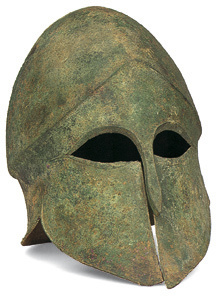
Bronze banqueter
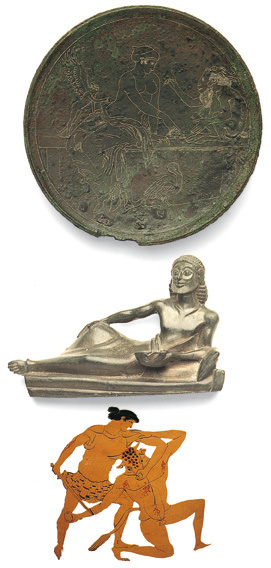
Bronze mirror cover showing Aphrodite playing knucklebones with Pan. 350 b.c.
figurine
Round
mouthed jug with coins
Griffins
head oinochoe
Theseus and the minotaur

Kylix
Aphrodite
removing
her sandal
Bronze chariot ornament
Eyewitness
ANCIENT
GREECE
Written by
ANNE PEARSON
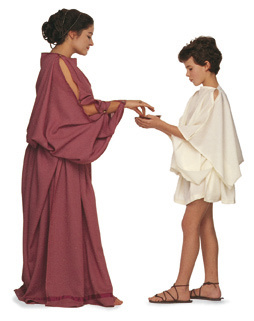
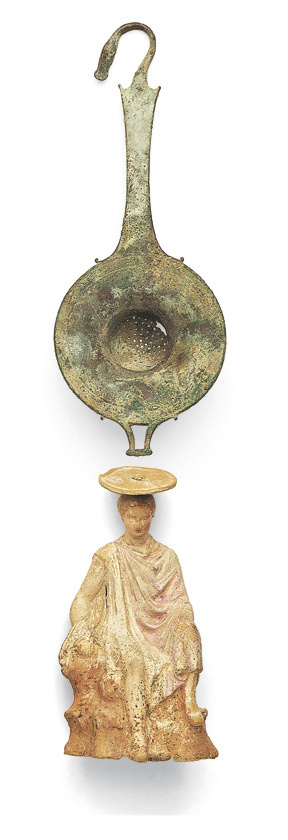
Wine strainer
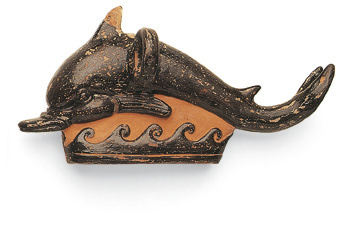
Bronze cymbals
Oil container
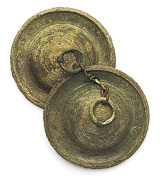
LONDON, NEW YORK,
MELBOURNE, MUNICH, and DELHI
Project editor Gillian Denton
Art editor Liz Sephton
Senior editor Helen Parker
Senior art editor Julia Harris
Production Louise Barratt
Picture research Diana Morris
Special photography Nick Nicolls
Additional photography Liz MacCaulay
Paperback Edition
Managing editors Andrew Macintyre, Camilla Hallinan
Managing art editors Jane Thomas, Martin Wilson
Publishing manager Sunita Gahir
Category publisher Andrea Pinnington
Editors Lorrie Mack, Sue Nicholson
Art editor Catherine Goldsmith
Production Jenny Jacoby, Angela Graef
Picture research Jo Haddon
DTP designers Siu Chan, Andy Hilliard, Ronaldo Julien Terracotta
This Eyewitness Guide has been conceived by
Dorling Kindersley Limited and Editions Gallimard
dancing woman
Terracotta First published in Great Britain in 1992
figurine of a This revised edition published in 2007 by
youth with hat Dorling Kindersley Limited,
80 Strand, London WC2R ORL
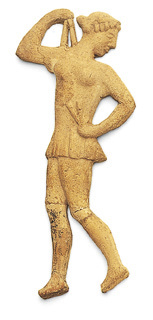
Griffin earrings
Copyright 1992, 2007, Dorling Kindersley Limited
A Penguin Company
2 4 6 8 10 9 7 5 3 1
AD336 04/07
All rights reserved. No part of this publication may be reproduced, stored
in a retrieval system, or transmitted in any form or by any means,
electronic, mechanical, photocopying, recording or otherwise, without the
prior written permission of the copyright owner.
A CIP catalogue record for this book is
available from the British Library.
ISBN 978-1-40532-041-2
Colour reproduction by Colourscan, Singapore
Printed in China by Toppan Printing Co., (Shenzhen) Ltd.
Discover more at
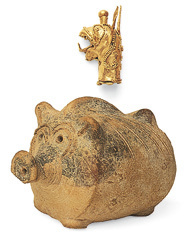
Rattle shaped like a pig
Contents
6
The Greek world
8
Minoan civilization
10
The Mycenaean civilization
12
To Troy and back
14
Greek expansion
16
Athens, city of Athena 18
Power and politics in Athens 20
Gods, goddesses, and heroes 24
Festivals and oracles
26
Temples
28
At home
30
Womens world
32
Growing up in Greece 34
Fun and games
36
Wining and dining
38
A day out
40
Body beautiful
42
Clothes for comfort
44
The Greek games
46
Wisdom and beauty
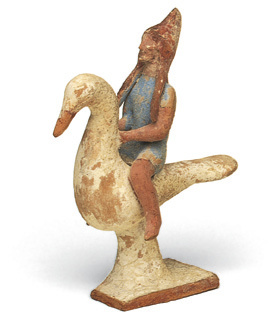
Childs toy
48
Vases and vessels
50
Farming, fishing, and food 52
Crafts, travel, and trade
54
Warfare
56
The state of Sparta
58
Science and medicine
60
Death and the afterlife
62
Alexander and the Hellenistic age
64
Did you know?
66
Whos who
68
Find out more
70
Glossary
72
Index
The briTish museum
The British Museum in London was inspired by classical Greek architecture. The first part of the building was completed in 1827 and the building as it is today gradually arose over the next 30 years. Many of the objects in this book can be seen there.
The Greek world
T he land of Greece is made up of mainland Greece and the numerous islands scattered throughout the Aegean and Adriatic Seas. It is a mountainous country with hot
dry summers and rain only in winter. The early Greek settlements developed as small independent communities cut off from each other by the mountains and
often competing for the best land, because the fertile arable soil is in short supply. Each of the city
Kouros
Kouroi (marble statues of naked boys), were
made mainly in the sixth century b.c. to decorate sanctuaries of the gods, especially
Apollo, but some may have been put up in memory of young soldiers who had died in battle. They
stand with their arms by their sides and one foot in front of the other.
states which developed out of these communities had a strong individual identity, and citizens were very loyal to their home state and to its patron deity. This miscellaneous collection of city-states sometimes joined together for mutual defence and did so most successfully against the Persians. The Greeks produced a glorious culture which has had a profound effect on western civilization, through succeeding centuries to the present day. They scaled the heights in literature, the visual and dramatic arts, in philosophy and politics, in sport, and in many other aspects of human life. Greek civilization reached its peak in Athens in the fifth centuryb.c.



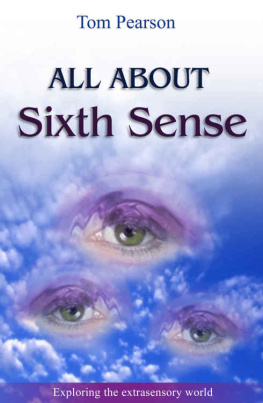


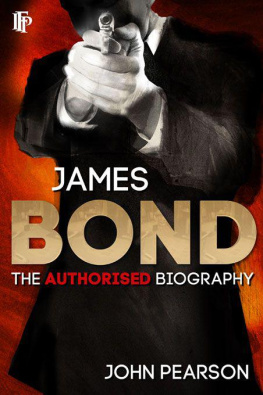

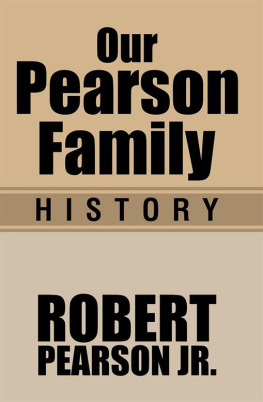
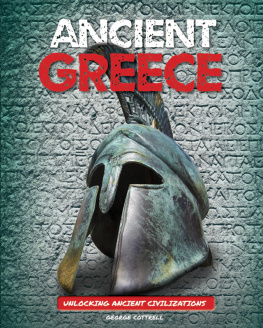
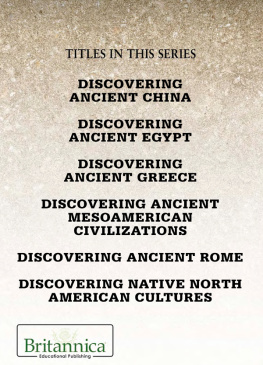
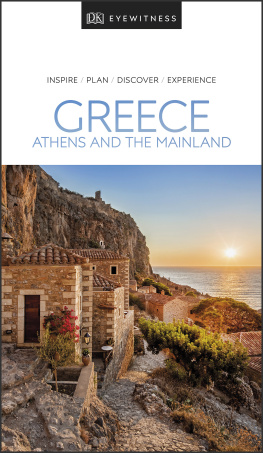
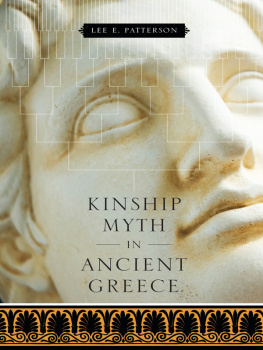
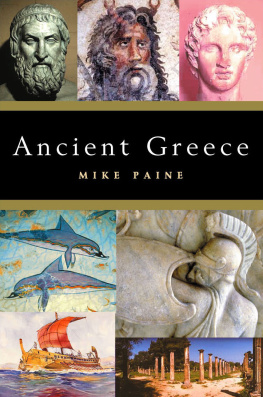
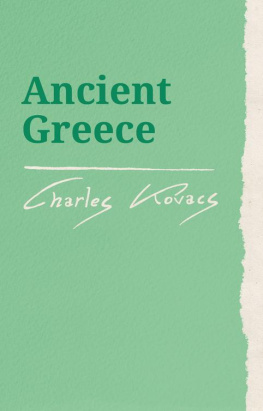
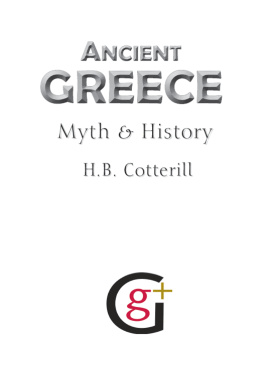

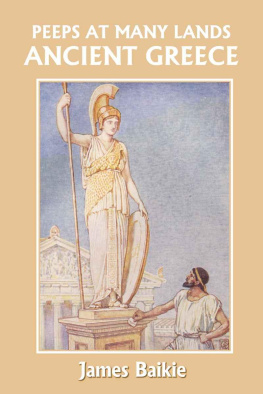
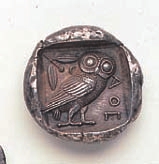
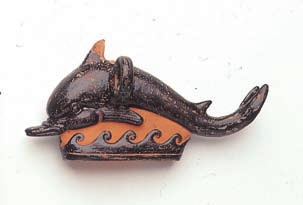
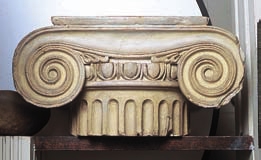
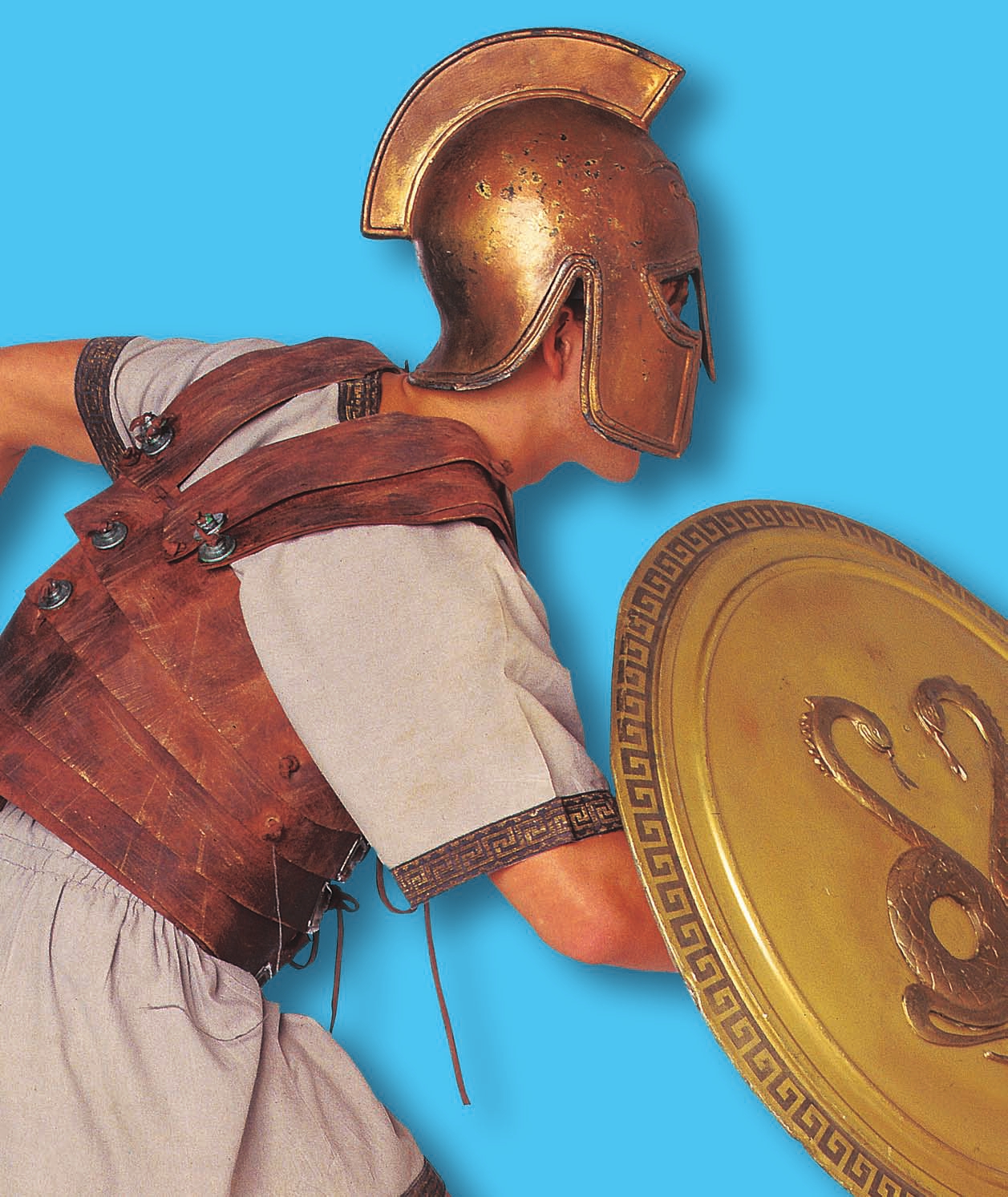
 Bronze banqueter
Bronze banqueter Bronze mirror cover showing Aphrodite playing knucklebones with Pan. 350 b.c.
Bronze mirror cover showing Aphrodite playing knucklebones with Pan. 350 b.c. Kylix
Kylix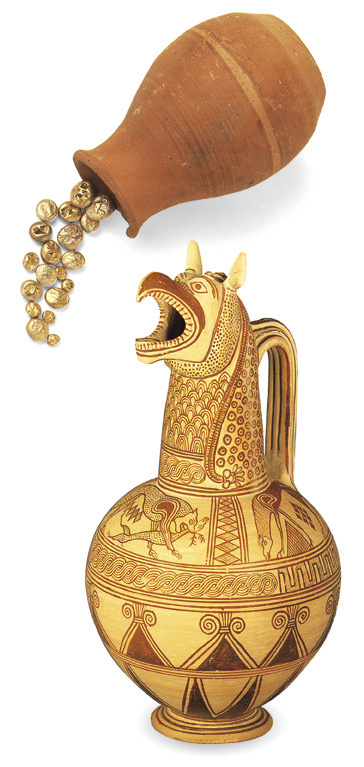



 Wine strainer
Wine strainer  Bronze cymbals
Bronze cymbals LONDON, NEW YORK,
LONDON, NEW YORK, Griffin earrings
Griffin earrings Rattle shaped like a pig
Rattle shaped like a pig Childs toy
Childs toy